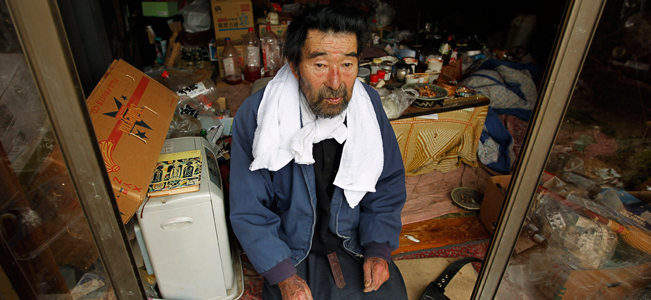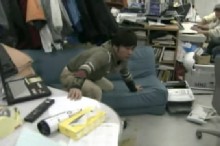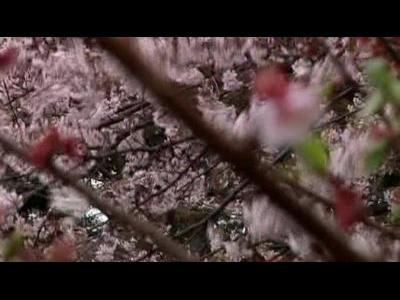11/3/2011 - Japan aftershock raises anxiety, knocks out power

"I feel helpless. I am back to square one," said Ryoichi Kubo, 52, who had just finally reopened his gas station in hard-hit Iwate prefecture (state) after the power outage and prolonged fuel shortage that followed the March 11 tsunami. Friday, he was again without electricity, his four gas pumps shut down.
Three people died in Thursday's aftershock, the worst since the day of the massive magnitude-9.0 quake. The latest tremor largely spared the nation's nuclear power plants and there was no sign of fresh problems at the troubled Fukushima Dai-ichi plant, which has been spewing radiation since it was swamped by the tsunami.
Power remained out Friday across much of northern Japan, including areas far inland, and homes were without gas and water. Gasoline was again scarce. Convenience stores sold out of basics like water and snack foods, and supermarkets switched back to rationing purchases.
In Ichinoseki, 240 miles (390 kilometers) northeast of Tokyo, lines of 30 or more people formed outside the Marue supermarket starting when it opened at 9 a.m. With power out, each customer was escorted through the aisles by an employee with a flashlight and a pad, who jotted down the price of each item.
"I'm so tired, I just want to buy some chocolate," said Yuka Sato, 27, who patiently waited in line with her neighbors. Most local businesses were closed. Restaurant owner Suzuki Koya, 47, bought a small gas stove and made a free meal for locals in a big boiling pot. "I saw the meat at the supermarket and I thought, we should do a hot pot," he said. "It's good to keep warm in times like these."
About 450,000 households were still without electricity Friday evening, said Souta Nozu, a spokesman for Tohoku Electric Power Co., which serves northern Japan. That includes homes in prefectures in Japan's northwest that had been spared in the first quake. With power lines throughout the area damaged, it was not clear whether normal operations would resume.
Several nuclear power plants briefly switched to diesel generators when the aftershock hit but were reconnected to the grid by Friday afternoon. One plant north of Sendai briefly lost the ability to cool its spent fuel pools, but quickly got it back. Several diesel generators had problems, though they did not cause any disruptions to key cooling systems. At a plant in Onagawa, some radioactive water splashed out of the pools but did not leave a containment building, Tohoku Electric said. Such splashing is not unusual. There was one bit of good news Friday: Automakers announced that they were beginning to bounce back after halting operations due to parts shortages in the wake of the tsunami. Toyota will resume car production at all its plants in Japan at half capacity from April 18 to 27. Nissan also said it would start up domestic production at half capacity from April 11.
But other developments were grim. Those killed by Thursday's quake were a 79-year-old man who died of shock, a woman in her 60s who lost power to her oxygen tank, and an 85-year-old man whose cause of death was not specified. Many bodies from last month's tsunami still have not been found, and many probably were swept out to sea and never will be. But as radiation from Fukushima Dai-ichi has dropped, police have fanned out to look for those who may have died inland. On Friday, hundreds of police, many mobilized from Tokyo, used their hands or small shovels, pulling four bodies in an hour from one small area in the city of Minami Soma. They had found only five bodies the previous day. The searchers, wearing white protective suits and blue gloves, struggled to bring the remains across the rubble to vans and minibuses that would take them to the nearest morgue. Each body was carefully hosed off to rid it of radiation.
"The area is literally a mountain of debris. It is an extremely difficult task," said an official with police in Fukushima prefecture who declined to be named because he was not authorized to talk to the media.
A tsunami warning was also issued after Thursday's aftershock, but it was canceled about 90 minutes later. The aftershock was in about the same location as the original 9.0-magnitude quake, off the eastern coast and about 40 miles (65 kilometers) from Sendai, an industrial city on the eastern coast. It was strong enough to shake buildings for about a minute as far away as Tokyo, about 200 miles (330 kilometers) away.
For tens of thousands of people living in shelters because they lost their homes in the tsunami or were evacuated from the area near Fukushima Dai-ichi or both, the aftershock was an unpleasant reminder of what they have been through.
Matsuko Ito said she screamed when the violent shaking woke her up around 11:30 p.m. She's not sure she can take much more. "It's enough," the 64-year-old while smoking a cigarette outside the shelter where she has been living in the small northeastern city of Natori. "Something has changed. The world feels strange now. Even the way the clouds move isn't right."
___
Associated Press writers Shino Yuasa, Malcolm Foster, Ryan Nakashima and Mari Yamaguchi in Tokyo and Eric Talmadge in Minami Soma contributed to this report.

 Play Video
Play Video 
 Play Video
Play Video  Play Video
Play Video 

No comments:
Post a Comment